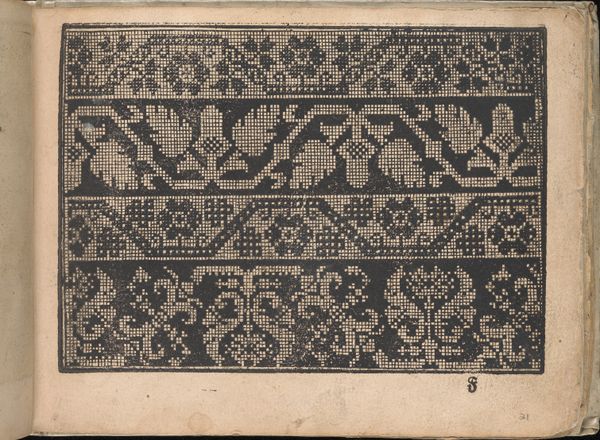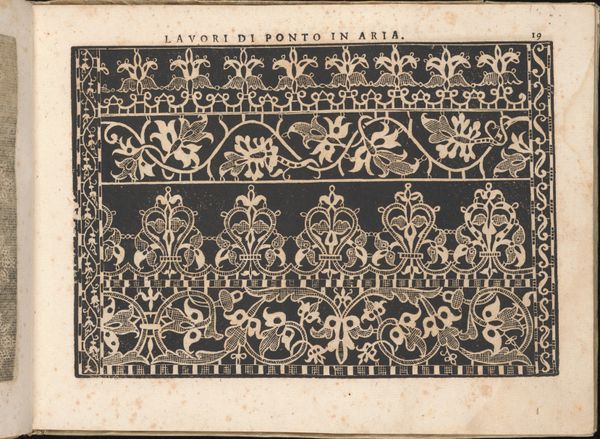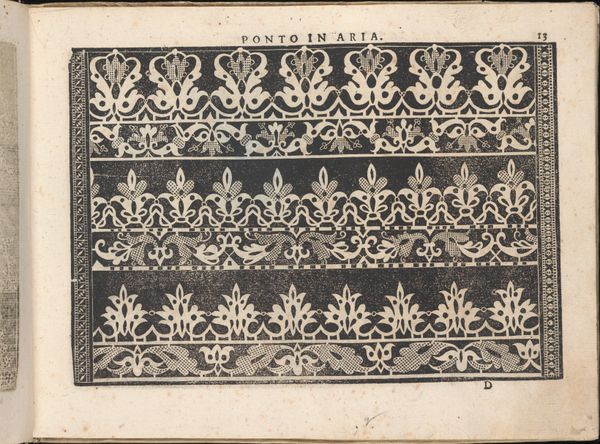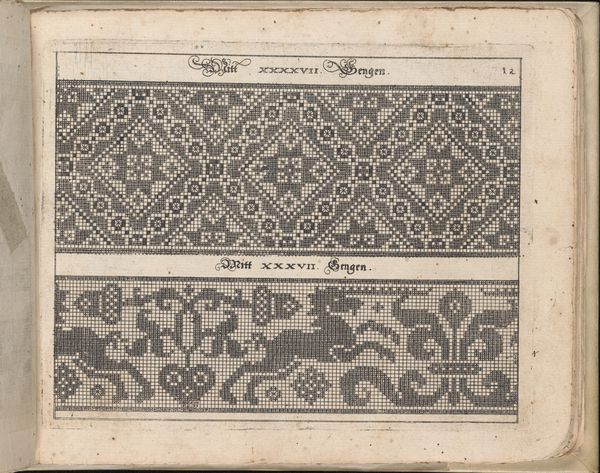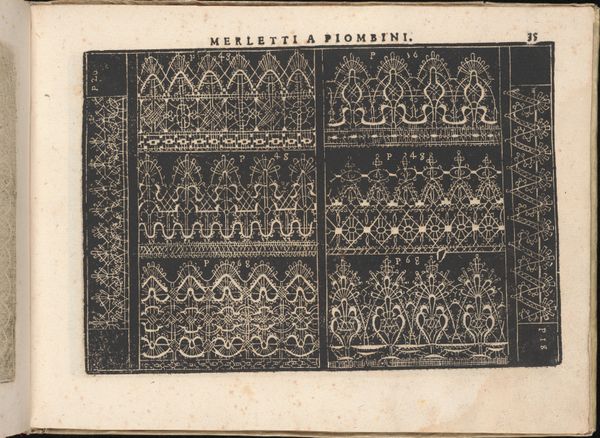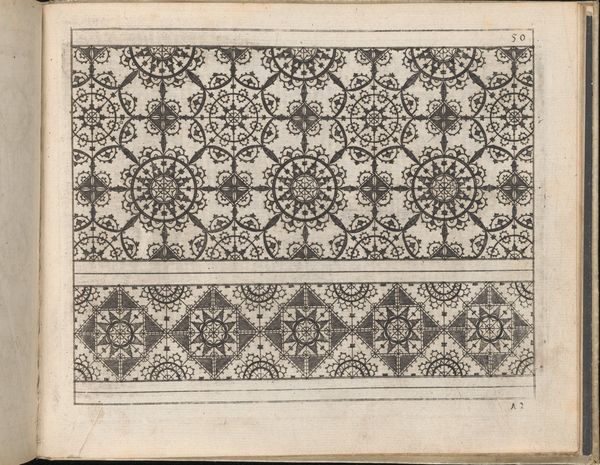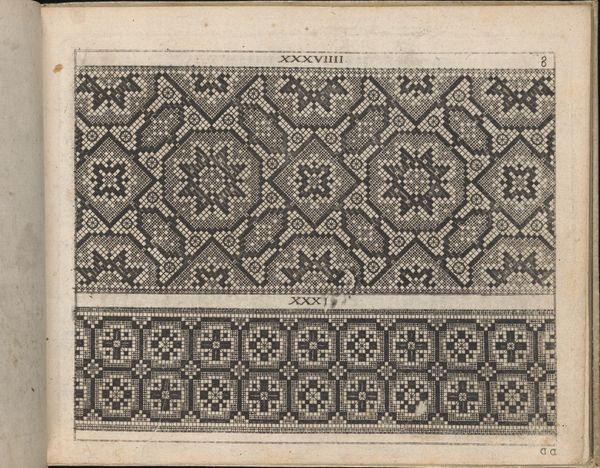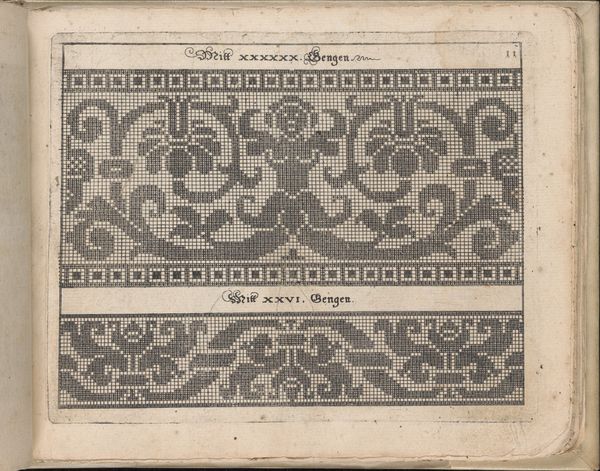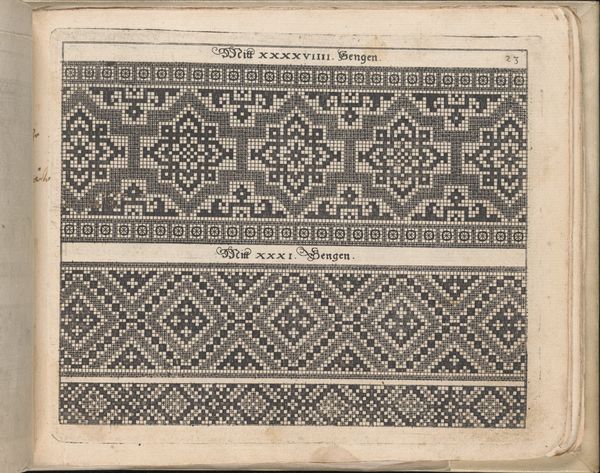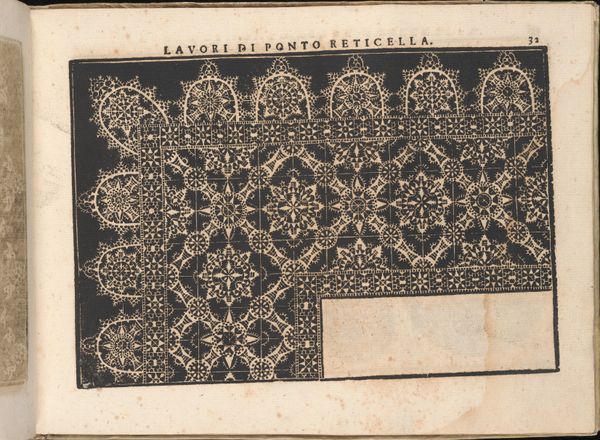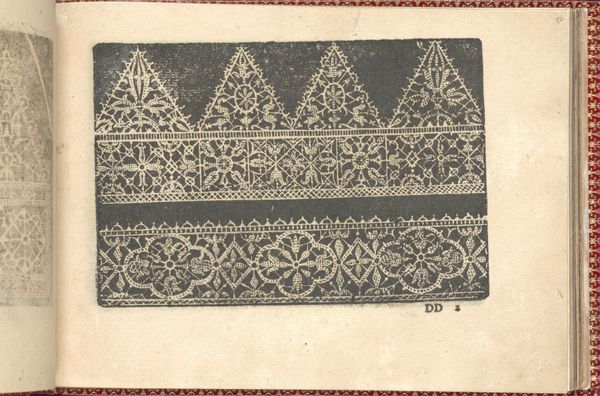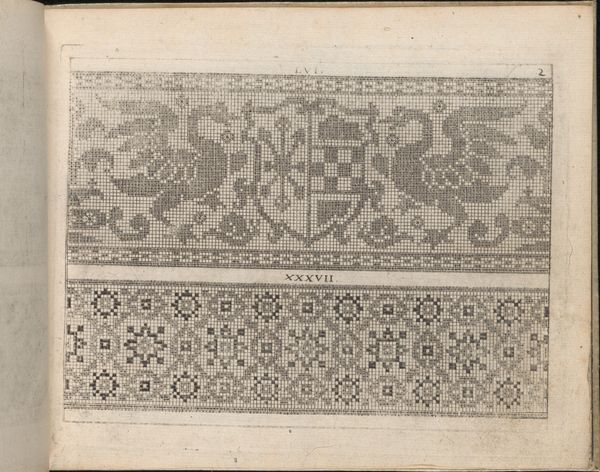
Fiore D'Ogni Virtu Per le Nobili Et Honeste Matrone, page 24 (recto) 1610
0:00
0:00
drawing, print, paper, engraving
#
drawing
# print
#
paper
#
italian-renaissance
#
engraving
Dimensions: Overall: 7 7/8 x 10 1/4 in. (20 x 26 cm)
Copyright: Public Domain
Curator: I'm struck immediately by the incredible intricacy within this limited palette. It feels so precisely organized and full of playful visual rhythm, considering the very deliberate limitations. Editor: You’ve hit on something significant. What we’re looking at is an engraving from 1610 titled "Fiore D'Ogni Virtu Per le Nobili Et Honeste Matrone," page 24. It's part of a larger volume, printed on paper, and was created by Isabella Catanea Parasole, a fascinating figure in the history of printmaking and lace design during the Italian Renaissance. Curator: The patterns are absolutely captivating. They read as both geometric and organic, all at once. I notice how the horizontal bands of design—each one seemingly a unique possibility for handmade lace—are sharply offset against the solid, imposing, rectangular space that creates the page's edges. The black and white contrast makes those elaborate edges pop all the more. Editor: Exactly, Isabella Catanea Parasole was consciously connecting female virtue to skill in design and handiwork; in fact, the full title translates to "Flower of All Virtue for the Noble and Honest Matrons.” Her designs acted as both inspiration and instruction, conveying a moral value system through the creation of such painstaking crafts. We also know Parasole taught mathematics alongside her craft, so her intellectual acumen and dedication to visuality coalesce in pieces such as these. Curator: That intention echoes in the formal aspects—I think. These images create symbolic links between a lady's virtue and an artisan's labor; it reminds me that such ornamental embellishments can provide unique social meanings or affirmations when interpreted across time periods and by different audiences. The details draw attention to repetition with variation—reflecting an aesthetic taste but also a way of life perhaps? Editor: A method, I’d say. An assertion even. There’s certainly a visual assertiveness here, an undeniable demand for skilled, rigorous, visual thinking...as well as dedicated technical practice. In these printed patterns we come closer to what those long-ago aspirations may have looked like in practice and principle. Curator: Looking closely again, I think these types of historical prints offer endless avenues of symbolic association; tracing not only women's labor or patterns, but entire lineages of thought, beauty, and meaning across cultures. Editor: Absolutely. I find myself wanting to see her whole catalogue, and read the many critical histories that grow directly from this vital craft.
Comments
No comments
Be the first to comment and join the conversation on the ultimate creative platform.
